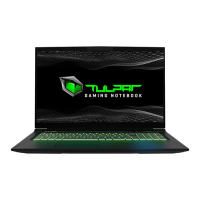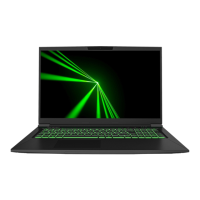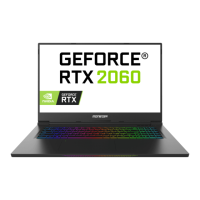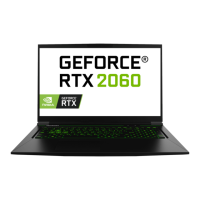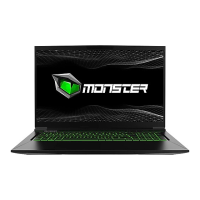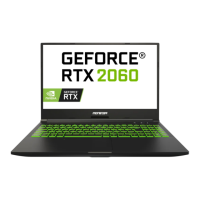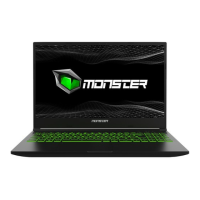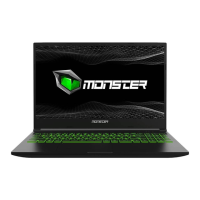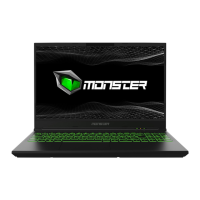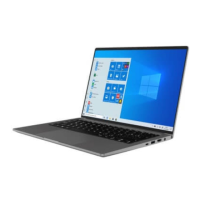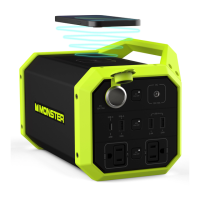Do you have a question about the Monster TULPAR T7 V22.2 and is the answer not in the manual?
CE compliance and EU guidelines including EMC, Low Voltage, and RF directives.
Safety precautions regarding pressure, air vents, environment, liquid, and magnetic fields.
Explanation of CAUTION and NOTE messages used in the manual for user guidance.
Detailed specifications of the notebook including physical, processor, graphics, memory, and I/O ports.
Steps to connect the AC adapter, open the display, and turn on the notebook.
Top-open view illustrating key components of the notebook with numbered labels.
Details and labels for ports and vents on the right and left sides of the notebook.
Details and labels for speakers and vents on the bottom of the notebook.
Illustrations of internal component layout and details of back side ports and connectors.
Instructions and recommendations for connecting and using the AC adapter for initial setup and charging.
Explanation of colored hot keys and function key combinations for various operations.
Details on activating keyboard functions using Fn key combinations for Suspend, Display Mode, etc.
Guide on operating the touchpad, including cursor movement and button functions.
Information on when to use BIOS setup and how to access it during POST.
Scenarios requiring BIOS setup, such as error messages or changing default settings.
Procedure for entering BIOS setup using Del or F2 keys during POST.
Overview of the BIOS setup utility, introducing the Main Menu and other sections.
Details on system information, setting system time, and system date within the BIOS Main Menu.
Configuration options in the BIOS Advanced Menu, including OS support and Intel Virtualization.
Options within the BIOS Security Menu for setting administrator and user passwords.
Settings in the BIOS Boot Menu for configuring boot sequence and LAN remote boot.
Options in the BIOS Exit Menu for saving changes, discarding changes, or restoring defaults.
